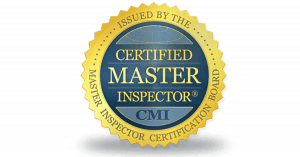Home Inspection – Plumbing Issues
Some common plumbing issues found in home inspections are generally related to water leaks, sewer line clogs, water heater problems, and subpar plumbing work. Some plumbing issues are glaringly obvious, such as a running toilet or dripping faucets, while others hide away behind walls or under the floor. This article will be dealing with some of the “Big Plumbing Issues” that you may come across.
Ontario Requirements for Plumbing
Ontario requires that each building situated on property that abuts on a street in which a public or municipal water main is located shall be provided with or have accessible to its occupants a plumbing systemincluding a potable water supply, a sanitary drainage system and plumbing fixtures. Every new home has to have a Plumbing Inspection.
Plumbing Inspection
Pipes, Drain, Waste and Vents
Filling plumbing pipes with pressurized air is a quick and effective way to inspect for leaks in a new installation of water pipes and drain-waste-vent (DWV) systems. The Ontario Building Code requires that an air test be conducted. The system is pressurised using a compressor and when test pressure is reached system is shut down and pressure should be maintained for 15 minutes with no visible drop.
Types of Supply Pipes
There are many types of plumbing products and material used in new or older homes. Some types are only rated for so many years, others may have problems with the material they are constructed from. Your home inspector will identify these issues and explain the ramifications to you as the home buyer.
Hot Water Heater
Identiying the fuel source and the age of your hot water tank can be very important. Typical hot water tanks are working 24/7 and if running on electricity canbe expensive to operate. Also the age of tank is also important, as is the quality of water going into it. Hard water can eat away at your tank causing a possible leak or even a flood if the bottom lets go due to rust.
The most common deficiency I always see with hot water tanks is the missing drain line on Pressure Relief Valve. By code drain is required to extend within 6 inches of floor or empty into approved drain.
Kitec Plumbing
Kitec plumbing is a type of plumbing used in the time period of 1995-2007. Manufactured by IPEX it was composed of a thin aluminium layer sandwiched between two layers of plastic and was easy to handle and install. Kitec was also very popular for in floor heating systems. The pipe is usually marked with one of the following brand names; Kitec, Kitec Xpa, XPA, PlumbBetter, Ipex aqua, WarmRite, Ambio Comfort, KERR Controls or Plomberie Améliorée. Fittings often have Kitec or XPA stamped on them.
was also very popular for in floor heating systems. The pipe is usually marked with one of the following brand names; Kitec, Kitec Xpa, XPA, PlumbBetter, Ipex aqua, WarmRite, Ambio Comfort, KERR Controls or Plomberie Améliorée. Fittings often have Kitec or XPA stamped on them.
In 2011 a Class Action lawsuit was filed against IPEX. The class action lawsuits in Canada and the U.S. allege that the product was negligently manufactured, which caused the pipes to disintegrate prematurely. Canadians have until 2020 to file claims. ( most professional plumbers will tell you that is not if Kitec will fail, but when it will fail.
Kitec plumbing lines are typically Orange in colour for hot lines and Blue in colour for cold lines. Brass fittings are known for early failure.
Galvanized Plumbing
Galvanized pipes being installed in the early 1960,s, Steel pipes are galvanized when they are dipped into molten zinc. This zinc coating helps prevent rust. However, after decades of use, corrosion and rust build up on the inside of these pipes, which can cause problems such as reduced water pressure, risk of burst pipes and possible lead contamination.
inside of these pipes, which can cause problems such as reduced water pressure, risk of burst pipes and possible lead contamination.
Galvanized pipes can contain 10 times the amount of lead deemed hazardous by EPA.
Many Century Homes may still have a lot or just some galvanized plumbing installed. Typically I find that all exposed and easy to access galvanized has been replaced but any located between floors etc are still left in place. Many insurance companies will not insure homes with Galvanized Plumbing.
Air Admittance Valves
Air admittance valves are mechanical devices that take the place of plumbing vents. They are negative-pressure-activated, one-way mechanical valves, used in a plumbing or drainage venting system to eliminate the need for conventional pipe venting and roof penetrations. A discharge of wastewater causes the AAV to open, releasing the vacuum and allowing air to enter the plumbing vent pipe for proper pressure equalization. They they’re listed and approved by several listing agencies and are legal in Ontario. ( beware not all Air Admitttance Valves are approved for use )
Missing Drain Traps
A plumbing trap is a U-shaped bent building plumbing drain component whose job is to maintain a water seal to keep sewer gases from rising back up into the building from the building’s sewer drain piping system. Many homeowners will install a drain for washing machine etc and forget or not know that a trap is required. Not installing the required trap can allow sewer gas to enter your home. Sewer gas can contain methane which could cause an explosion or risk of asphyxiation. ( an older floor drains water can evaporate from trap allowing sewer gas to enter home. New homes have a trap feeder line from a tap located close by which allows a small amount of water to enter trap every time it is used. )
Questions & Answers
Call Roger at 705-795-8255 for answers to any questions regarding your homes systems.
